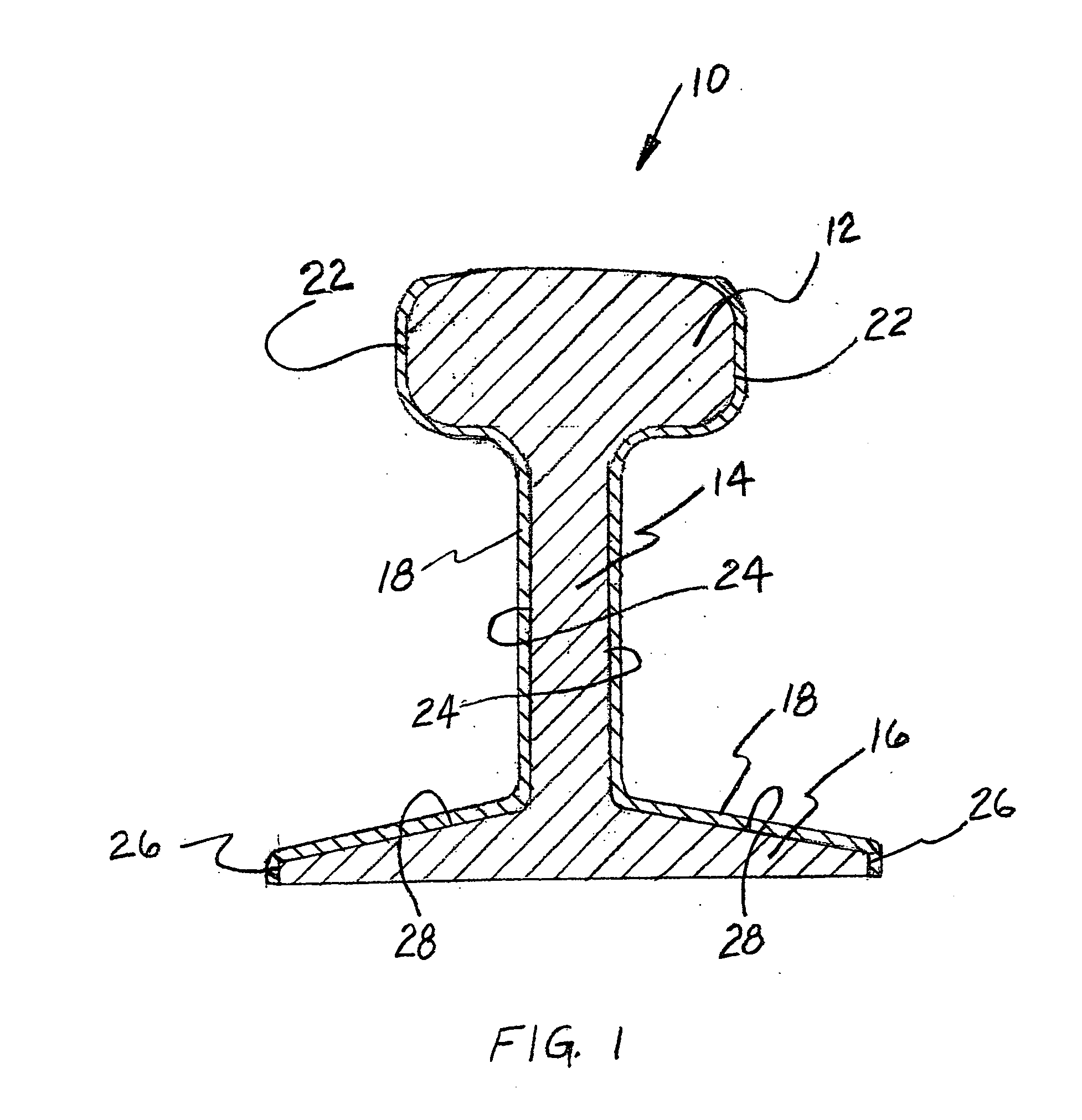Railroad rail having thermal insulationbelow the railhead either coated in the field or at the rail production facility
- Summary
- Abstract
- Description
- Claims
- Application Information
AI Technical Summary
Benefits of technology
Problems solved by technology
Method used
Image
Examples
first embodiment
[0026] According to the invention, there is provided a method of reducing the heat absorbsion of a rail installed as part of a track structure. By reducing such heat absorbsion there is a decrease in the detrimental expansion of the rail achieved.
[0027] The method includes selecting a ceramic based insulating type paint having a predetermined capability of resisting heat buildup in such rail. The presently preferred ceramic based insulating paint is one presently manufactured and marketed by Superior Products International, Inc. under the Trademark Super Therm®. This particular paint product has four different ceramic materials to achieve its enhanced insulating capability. Each of these four ceramics provide certain preselected desirable characteristics to the insulating paint. These characteristics include heat reflection, dead air space and blocking of infrared rays. Additionally, as shown in a 180 degree bending test, this particular ceramic based insulating paint exhibits excel...
second embodiment
[0031] the present invention provides a method of forming a heat resistant rail to be installed in a track structure at the rail manufacturing facility. This method includes the steps of selecting a ceramic based insulating type paint, as described above, having a predetermined capability of resisting heat buildup in the rail to be coated with such paint. The ceramic based insulating type paint selected is effective in blocking heat from each of radiation, convection and conduction. In addition, the ceramic based insulating type paint selected should be non toxic.
[0032] The method also requires removing any rolling oil and other contaminants from a surface area of at least certain predetermined portions of such rail prior to coating.
[0033] Thereafter, applying such ceramic based insulating type paint selected to the predetermined portions of such rail and installing such rail pre-coated with such ceramic based insulating type paint selected and applied to such predetermined portio...
PUM
 Login to View More
Login to View More Abstract
Description
Claims
Application Information
 Login to View More
Login to View More - R&D
- Intellectual Property
- Life Sciences
- Materials
- Tech Scout
- Unparalleled Data Quality
- Higher Quality Content
- 60% Fewer Hallucinations
Browse by: Latest US Patents, China's latest patents, Technical Efficacy Thesaurus, Application Domain, Technology Topic, Popular Technical Reports.
© 2025 PatSnap. All rights reserved.Legal|Privacy policy|Modern Slavery Act Transparency Statement|Sitemap|About US| Contact US: help@patsnap.com


